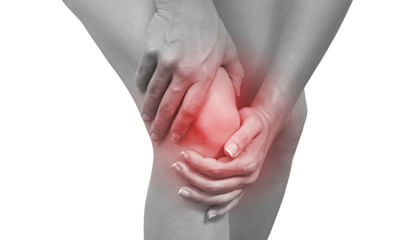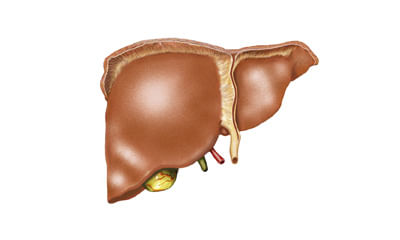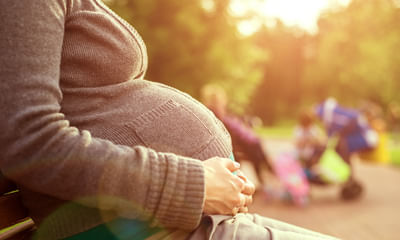Obesity During Pregnancy
I affected l4-l5 disc bulging before 10 years back. It was settled with ayurvedic medicine. I was obesity. I married 10 ...
Ask Free Question
Penis need not reach upto cervix. Any couple desirous of pregnancy and not getting the same naturally must meet a gynecologist or infertility specialist accepting the fact that it needs many reports and different trials of treatment. This means the couple must have patience and go to one with whom they have trust to stick for a long time. In view of age better to have pregnancy as early as possible - so may opt for ivf.
I am a 28 years female, I am overweight after pregnancy, need nutrition consultant. ...
Ask Free Question
Hello, first of all, we should not target fast weight loss. It took time to gain, it will take time to loose. Weight gain can be handled by few major steps: 1. Balanced diet: in a day take 25% cereals (rice/ roti/ idli/poha etc.) + 25% protein rice foods (dairy/ dals/ nuts/ non-veg etc.) + 40% vegetables- prepared and salads + 10% fruits. Make sure to take small and frequent meals. 2. Drink adequate water, keep sipping throughout the day. Drinking 1 glass per hour is not a great idea. 3. Sleep and take meals on proper time. Time plays important role in digestion and absorption of food, even impacts weight through hormonal cycles. 4. Regular activity is a must. Do what ever you like, whenever you have time. Just keep 2 hour gap after breakfast, lunch or dinner. You can play games like badminton, do yoga, dance, walk and jog, join classes like judo karate etc. Anything that suits you. 5. Start small, do not create huge goals from day one, example do 5 min exercise in first week. Make it 10 min next week etc. 6. Work on stress management. Do certain activites which you like. Example listen to music while doing mindless work. This should help, you can also visit our blog url/obesity-scientific-approach/
Hello I missed my period by 12 days delay. Visited gynaecologist she said my overy are healthy there is no pcod founded, ...
Ask Free Question
There are many reasons for irregularities in menses. Pcod blood loss anaemia thyroid disorders other hormone disorders obesity losing weight after complete case taking and necessary investigations, the condition can be diagnosed. For online consultation, contact or whatsapp mobile.
I have pain and burning below knees, ankles. Some ankles bone over growth. Seeking your advice and treatment. ...
Ask Free Question
Skeletal dysplasia a category of rare genetic disorders that affect bones and joints and hinder children's growth and development. The disorder causes abnormally shaped bones, especially in the head, spine and long bones of the arms and legs. About half of fetuses with skeletal dysplasia are stillborn or die within the first six weeks of life. But not all children with dysplasias have severe medical problems. Many of these children can live relatively normal lives the first indication that a baby has a skeletal dysplasia condition may arise during a routine prenatal ultrasound examination, usually one conducted in the second trimester of pregnancy. The image may show arms and legs shorter than average and a head larger than average. Developmental dysplasia of the hip doesn't cause pain in babies, so can be hard to notice. Doctors check the hips of all newborns and babies during well-child exams to look for signs of ddh. Parents could notice: the baby's hips make a popping or clicking that is heard or felt. Stretching and strengthening exercises or use of specialized devices may provide symptom relief. These include: physical therapy. A physical therapist can instruct you in a series of exercises to stretch the plantar fascia and achilles tendon and to strengthen lower leg muscles, which stabilize your ankle and heel. A therapist might also teach you to apply athletic taping to support the bottom of your foot. Night splints. Your physical therapist or doctor might recommend that you wear a splint that stretches your calf and the arch of your foot while you sleep. This holds the plantar fascia and achilles tendon in a lengthened position overnight and facilitates stretching. Orthotics. Your doctor might prescribe off-the-shelf or custom-fitted arch supports (orthotics) to help distribute pressure to your feet more evenly. Injections. Injecting a type of steroid medication into the tender area can provide temporary pain relief. Multiple injections aren't recommended because they can weaken your plantar fascia and possibly cause it to rupture. More recently, platelet-rich plasma has been used, under ultrasound guidance, to provide pain relief with less risk of tissue rupture. Lifestyle and home remediesto reduce the pain of plantar fasciitis, try these self-care tips: maintain a healthy weight. Lose weight if you're overweight or obese to minimize stress on your plantar fascia. Choose supportive shoes. Avoid high heels. Buy shoes with a low to moderate heel, good arch support and shock absorbency. Don't go barefoot, especially on hard surfaces. Don't wear worn-out athletic shoes. Replace your old athletic shoes before they stop supporting and cushioning your feet. If you're a runner, buy new shoes after about 400 to 500 miles of use. Change your sport. Try a low-impact sport, such as swimming or bicycling, instead of walking or jogging. Apply ice. Hold a cloth-covered ice pack over the area of pain for 15 to 20 minutes three or four times a day or after activity. Or try ice massage. Freeze a water-filled paper cup and roll it over the site of discomfort for about five to seven minutes. Regular ice massage can help reduce pain and inflammation. Stretch your arches. Simple home exercises can stretch your plantar fascia, achilles tendon and calf muscles. Heel pain prevention: maintain a healthy weight. Choose supportive shoes. Don't wear worn-out shoes. Apply ice. Ice. Use an ice pack or cold compress on your foot for 10 to 15 minutes at a time. This is especially beneficial at the end of a long day or when you’ve spent a lot of time on your feet. Or, roll a frozen water bottle under your foot. This method incorporates a bit of massage, relieving tightness in the bottom of your foot. Massage. Massaging the arch of your foot helps to relieve pain and promote mobility. Use your fingers and knuckles to deeply massage your foot for 1 to 5 minutes at a time. One technique is to place both thumbs at the center line of your arch and move them to the outer edges of your feet. Inserts. Use cushion inserts in your shoes for additional support and cushioning. Inexpensive options can be purchased off the shelf. Wear supportive shoes with thicker soles and extra cushioning for additional support that can help to reduce tension in the plantar fascia. Kinesiology tape can be used to improve arch and heel support. Night splints. Many people find quick and effective results by using night splints. They can be worn while sleeping to stretch the plantar fascia. They help to keep the plantar fascia relaxed and prevent you from pointing your feet down. Exercisefoot flexuse your hand to pull your toes back toward your shin. Hold this position for about 30 seconds. Do each side two to three times. Toe towel grab place a small towel under your foot. Curl your toes to grip the towel. Raise the front of your foot off the floor. Hold this position for a few seconds. Release the towel as you lift up your toes and spread them as far apart as possible. Heel and calf stretch to do this stretch: 1.stand facing a wall. 2.place your hands on the wall and move one foot back as far as you can comfortably. Toes on both feet should be facing forward, heels flat, with a slight bend in your knees. 3.lean into the stretch and hold for 30 seconds. You should feel the stretch in your back leg. 4.change legs and repeat. 5.do this stretch twice for both legs. Golf ball roll roll a golf baell under your right foot. Continue for up to 1 minute. Do each foot two to three times.
Doctor I have been suffering from the issue of high blood pressure for a long time. And now I am also suffering from the ...
Ask Free Question
The primary causes of fatty liver are high blood pressure, obesity, higher levels of fat or specific triglycerides in blood, insulin, infection, pregnancy etc.
I have missed period. Sexually active. Completely protected. Have irregular periods. Obese. Have pcod. Am I pregnant? ha ...
Ask Free Question
Negative test means no pregnancy of 14 days or more. May confirm with blood test serum hcg-beta but better is to go physically to gynecologist.
I had unprotected sex (he did’t cum inside) 10 days before my periods which were only for 4 days and the blood was water ...
Ask Free Question
To exclude pregnancy, instead of guessing, get pregnancy test done. If negative first time again do it after cew days. That will be final. If no pregnancy, irregular periods at this age foretells possible pcod/ pcos which should be addressed by modifications in food habits, lifestyle, inclusion of yog/ exercise, pranayam, de-stressing by meditation and at last ayurvedic herbals according to conditions. Obesity, voice changes etc should be monitored. If you fall prey to contraceptives unnecessarily, you may end up sticking to these for decades. These should be second priorty only and not primary. Pl talk on Lybrate phone or chat for safe, effective, economic solutions so that your future healthy life becomes brighter.
My friend is 29 and is obese. She is 162 cm and 89 kg. She has no health issues. She has healthy lifestyle works out 5 d ...
Ask Free Question
Hello, greetings from your ayurveda wellness coach. There are methods in ayurveda with medicines and therapies, it is better to consult so that I can give tailormade solution. In ayurveda we treat in three dimensions for the effective results, those are ‘aahara’ i.e diet modification, ‘vihara’ activity modification, and then comes with ‘aushadha’ or medicines or therapies. I specialize in giving satvavajaya chikithsa. That involves ayurvedic way of counselling. With my 16 years of clinical experience, I can clear your doubts and suggest proper medications, and lifestyle modifications.
At 4 months my baby was aborted after one week I suffered from dvt now I am taking acitrom 2 and 3 mg alternative. My do ...
Ask Free Question
Dvt nit related to the abortion, but pregnancy is a risk for thrombosis in patients with risk. U need to rule out risk factors.
Does the uterus wall thickens when 8 weeks pregnant? I wanna know as I got an abdomen ultrasound when I was having pregn ...
Ask Free Question
The normal thickness of the endometrium changes throughout a person’s life, from childhood, through to sexual maturity, fertile years, and after menopause. Medicalnewstoday uses cookies to improve your experience and to show you personalized ads. Privacy policy. More information what to know about endometrial thickness medically reviewed by valinda riggins nwadike, md, mph — written by danielle dresden on november 19, 2019 normal thickness measurement causes of thin or thick lining symptoms treatments seeing a doctor outlook the endometrium is the lining of the uterus. It is one of the few organs in the human body that changes in size every month throughout a person’s fertile years. Each month, as part of the menstrual cycle, the body prepares the endometrium to host an embryo. Endometrial thickness increases and decreases during the process. Two hormones, estrogen and progesterone, prompt these cycles of endometrial growth and its shedding through menstruation if a pregnancy does not develop. In this article, we look at the normal range for endometrial thickness, causes of changes, and when to see a doctor. Normal thickness a healthcare provider may measure the thickness of the endometrium with an ultrasound. The normal thickness of the endometrium changes throughout a person’s life, from childhood, through to sexual maturity, fertile years, and after menopause. In imaging tests of young females who have not yet begun menstruating, the endometrium is present but smaller than it will be later in life. According to the radiological society of north america (rsna), the endometrium is at its thinnest during menstruation, when it usually measures between 2–4 millimeters (mm) in thickness. The first half of the proliferative phase starts around day 6 to 14 of a person’s cycle, or the time between the end of one menstrual cycle, when bleeding stops, and before ovulation. At this phase, the endometrium begins to thicken and may measure between 5–7 mm. As the cycle progresses and moves towards ovulation, the endometrium grows thicker, up to about 11 mm. About 14 days into a person’s cycle, hormones trigger the release of an egg. During this secretory phase, endometrial thickness is at its greatest and can reach 16 mm. Pregnancy endometrial thickness is important in pregnancy. Healthcare experts link the best chances for a healthy, full-term pregnancy to an endometrium that is neither too thin nor too thick. This allows the embryo to implant successfully and receive the nutrition it needs. The endometrium gets thicker as the pregnancy progresses. Menopause the rsna also state that in healthy postmenopausal people, the endometrium typically measures about 5 mm or less. How to measure ultrasound is the most common way to measure the thickness of the endometrium. It is the method that healthcare providers use first, especially if an individual has reported abnormal vaginal bleeding. When ultrasound is not suitable, often due to the position of a person’s uterus or other health conditions, doctors use mri. Causes of a very thin or thick endometrial lining the thickness of the endometrium changes during a person’s menstrual cycle, but other factors can prompt changes as well. One of the more common causes of changes in endometrial thickness is pregnancy. Women who are having an ectopic pregnancy or who are less than 5 weeks pregnant may show signs of a thickening endometrium. Cancer of the endometrium or the ovaries is one of the most severe conditions that can lead to an increase in endometrial thickness. According to the american cancer societytrusted source, endometrial cancer is the most common cancer affecting a person’s reproductive systems. Developing more often in white people than african american people, endometrial cancer is rare in females under 45. The average age at diagnosis is 60. Other factors contributing to a greater thickness of the endometrium include: obesity hormone replacement therapy (hrt) tamoxifen chronic high blood pressure endometrial polyps diabetes scar tissue endometrial hyperplasia.










